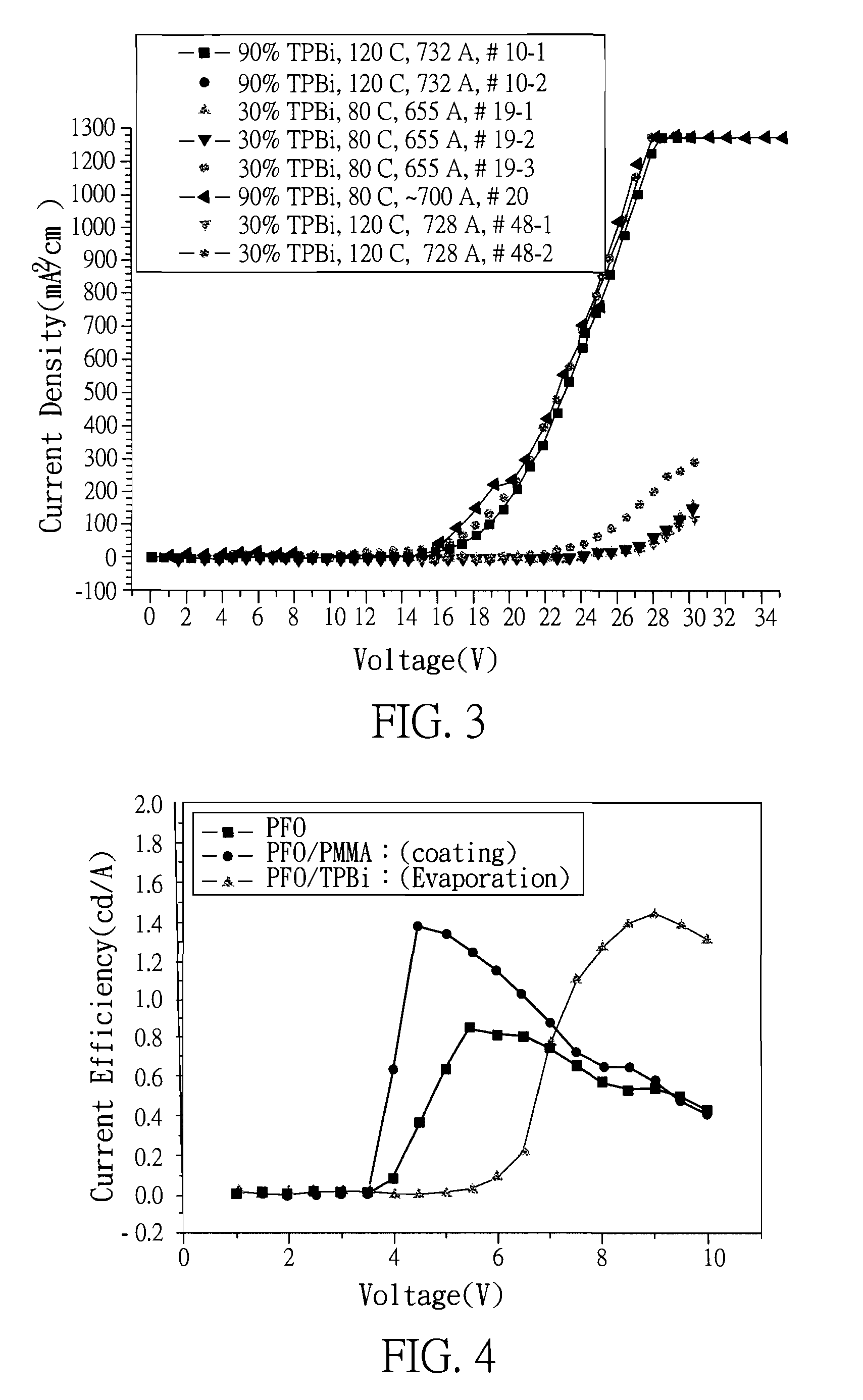Organic optoelectronic component
- Summary
- Abstract
- Description
- Claims
- Application Information
AI Technical Summary
Benefits of technology
Problems solved by technology
Method used
Image
Examples
example 1
[0046]In the first example of the present invention, the first electrode is an anode, the organic molecule as the hole blocking material and the second intermediate layer is 1,3,5-tris(N-phenylbenzimidazol-2-yl)benzene (TPBi), the polymer used in the second intermediate layer is poly(methyl methacrylate) (PMMA) with a number average molecular weight of about 1,000,000, the active layer is formed of poly(9,9-dioctylfluorene) (PFO), and the second electrode is a cathode. The fabrication is performed as follows:
[0047]After indium tin oxide (ITO) with a thickness of 150 nm was formed on a glass substrate with a thickness of 0.7 nm as a first electrode (anode), PFO with a thickness of 80 nm was evaporated on the first electrode by thermal evaporation as an active layer or other polymer materials can be selected to form thin films by a solution process as active layers. Then, 30 mg of PMMA and 70 mg of TPBi were dissolved in toluene respectively, and a second mixture containing PMMA and T...
example 2
[0051]The method of Example 1 was repeated, but the organic molecule of the second intermediate layer was 2-(4-biphenylyl)-5-(4-tert-butylphenyl)-1,3,4-oxadiazole (PBD) as a hole blocking material, the polymer of the second intermediate layer is polyvinylpyrrolidone (PVP) with a number average molecular weight of 360,000, and polyfluorene (PFO) was used as a material for the active layer.
[0052]After ITO with a thickness of 150 nm was formed on a glass substrate with a thickness of 0.7 nm as a first electrode (anode), PFO with a thickness of 60 nm was coated on the first electrode by spin coating as an active layer or other polymer materials can be selected to form thin films by a solution process as active layers. Then, 50 mg of PVP and 50 mg of PBD were dissolved in 10 ml of n-butanol respectively, and a second mixture containing PVP and PBD was coated on the active layer by spin coating. The active layer would not be damaged by the second mixture since the material of the active l...
PUM
| Property | Measurement | Unit |
|---|---|---|
| Number average molecular weight | aaaaa | aaaaa |
| Molecular weight | aaaaa | aaaaa |
Abstract
Description
Claims
Application Information
 Login to View More
Login to View More - Generate Ideas
- Intellectual Property
- Life Sciences
- Materials
- Tech Scout
- Unparalleled Data Quality
- Higher Quality Content
- 60% Fewer Hallucinations
Browse by: Latest US Patents, China's latest patents, Technical Efficacy Thesaurus, Application Domain, Technology Topic, Popular Technical Reports.
© 2025 PatSnap. All rights reserved.Legal|Privacy policy|Modern Slavery Act Transparency Statement|Sitemap|About US| Contact US: help@patsnap.com



